#shinto gods
Explore tagged Tumblr posts
Text

Some previous art of Kami I did 3 years back. ❤️
#kami#Shinto#shintoism#Amaterasu#Tsukuyumi#Susanoo#Ame-no-Uzume#Izanagi#Izanami#Shinto gods#art#aaaaa 💕💕💕#I’m still so proud of myself for this achievement!! 🥰#drawing
6 notes
·
View notes
Text
A Deceptive Fox
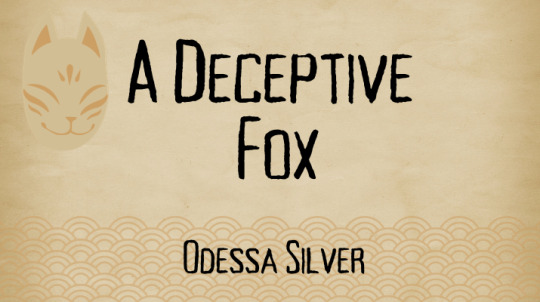
Inari’s eyes darkened. “You’d refuse a god twice?”
I could feel my hands trembling, my heart hammering in the forge of my chest. “Yes.”
🌸 🌸 🌸
Only fools deny Inari once, but how about those who deny her twice?
Read for free now on AO3, Substack, or another site of your choosing.
Want to support me and read the stories before anyone else? Subscribe via Patreon or Ream. Ream followers (free) also now can read an exclusive story "Tanuki Troubles"!
🌸 🌸 🌸
Meeting Hirotoshi again was fun, and I knew his story wasn't over just yet. But again, luck is really not on his side.
#indie author#writing community#fantasy#japan#historical fantasy#original fiction#original writing#short story#yokai#kistune#japanese culture#japanese folklore#inari#shinto#shinto gods#writeblr#writers of tumblr
0 notes
Text
Finally people remember that they are based after ACTUAL GODS/KAMI FROM A REAL CULTURE AND PEOPLE! Aka japan isn't just anime and videogames.
Thank you so much op.



Raiden and Fujin designs/costumes/forms based on depictions of the dieties Raijin and Fujin (demon/oni-like features, 3/4 fingers, 8 drums + bag of winds, etc)
#finally some good food#mortal kombat#raiden#fujin#lord raiden#lord fujin#fan art#shinto gods#kami#shinto god raiden#shinto god fujin
64 notes
·
View notes
Text
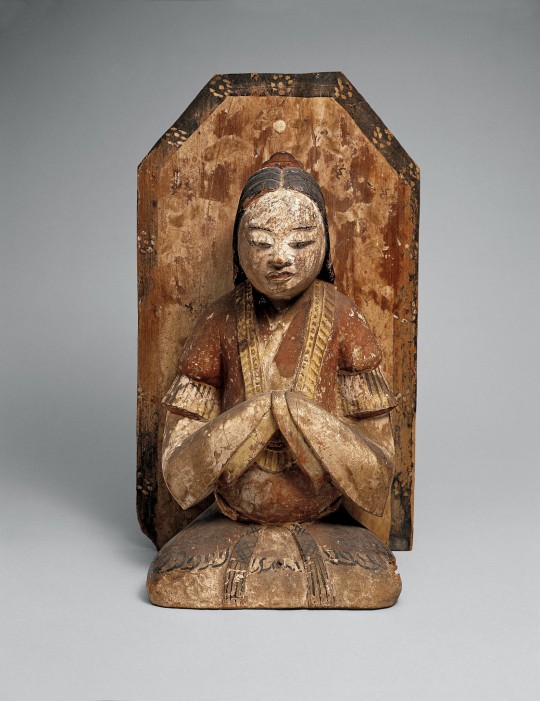
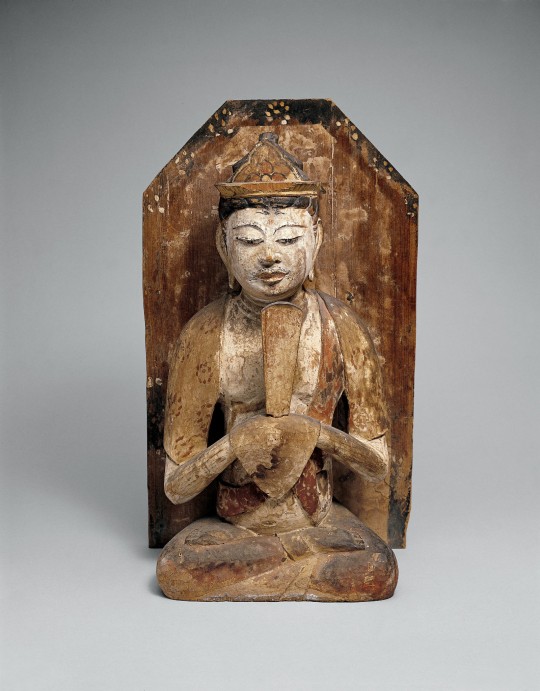
~ Shinto Goddess and Shinto God.
Date: 12th-13th century
Place of origin: Japan
Medium: Wood with color
#history#museum#archeology#sculpture#history of art#shinto goddess#shinto#shinto god#japanese art#japan#japanese#asian art#wood#12th century#13th century
780 notes
·
View notes
Text
Pagan syncretism is the best. I love being able to worship whomever, whenever. I love being able to study occultism from around the world and put together a practice that is so unique and special to me. I love being able to worship gods from ancient societies like Greece. I love the even more ancient gods from Egypt. And we can go back further and revive the gods from Sumer! I love honoring spirits of the sun, and moon, of death, and love. I love being playful with the faeries, soaring with dragons, and meditating with bodhisattvas. If it is open to me, I am willing to learn and boy has it enriched my life tenfold! I don’t ever want to stop!
#pagan#paganism#hellenic deities#hellenic devotion#polytheism#omnism#animism#syncretism#dragons#faeries#faery witch#faerie#fae folk#bodhisattva#meditation#mesopotamian deities#kemetic#egyptian deities#greek gods#shinto#buddah
372 notes
·
View notes
Text
I enjoy gojohime as a non-canon ship but what with utahime being a miko, and gojo being a ‘god among men’, and now with utahime literally making the strongest, even stronger...! Like seriously, is there something there??
Some fics pretty much guessed that utahime’s ct would be some sort of amplifier (as an explanation for why she’s only semi-grade 1, she would always have to work with other sorcerers), but it fits her overall personality as well. She was gojo’s support in looking for the traitor (and boy I am always weak for supportive ships), and supports her students really well such that they adore her. It’s pretty lucky for the sorcerer world that both utahime and gojo decided to be teachers, because whoo boy if they had ever decided to team up before now, they could have ruled the world.
I imagine this may have been the first time that utahime and gojo actually got to (or were allowed to) work together. utahime would be useful on the field with other sorcerers, but I imagine that with gojo’s talent and overabundance of cursed energy, having utahime support him would have been seen as superfluous (and would no doubt have scared the elders). It’s nice that they got to work together now.
#gojohime#gouta#iori utahime#gojo satoru#jjk#jjk spoilers#jujutsu kaisen#jujutsu kaisen spoilers#headcanon says gojo's pretty excited to be working together with utahime#and the kids#now I just need nobara back#seriously all of the shrine shinto miko gojohime fics have got it right#something something about utahime dancing a ceremonial dance to lend power to the gods or god in this case
937 notes
·
View notes
Text




Cats at Atago Otojiro Inari Shrine (愛宕音次郎稲荷神社)
As I approached the Atago Otojiro Inari Shrine, my attention was immediately captured by a couple of mysterious feline figures hanging out near the torii gates. Now, I’ve always had a soft spot for cats—they’re such beautiful, enigmatic creatures, and let’s face it, they’re pretty much the royalty of the animal kingdom.
At the entrance, I encountered a rather grumpy-looking black cat, who seemed to be guarding the shrine with an air of quiet authority. It gave me the kind of stare that said, "I don’t need you, but I’ll tolerate your existence for now." Its attitude was pure feline mystery—like it was involved in some ancient, secretive cat society that I was never meant to understand. The second cat, a white and grey one, was more laid-back, but still had that slightly aloof vibe. It sauntered around the torii entrance like it owned the place, giving me a look that basically screamed, "I’m just here for the snacks, human. Don’t get any ideas."
Honestly, watching these two was like observing the beginning of an epic feline drama—a grumpy, enigmatic leader and its slightly more relaxed companion, both silently plotting their next move, probably towards some hidden stash of treats. These cats were no ordinary shrine residents; they were the true gatekeepers, and I felt privileged just to be in their presence. It's like they were saying, “Sure, you’re here for a spiritual journey, but remember—no one leaves without earning the trust of the cats.”
🐱
—Emmy
#日本#japan photos#japan#japan travel#travel#Shrine#Shinto#Religion#Cats#Animals#Kawaii#Torii#Gods#Hakata#Fukuoka#Cute
22 notes
·
View notes
Note
Aphrodi, but old 👉👈
Like so old, he might only have died of old age around Kanon's era (he probably lived longer and better than the rest of the OG cast)
(Yeah it's a bit macabre)
Aphrodi's in the bordering space between mortal and godhood.. meaning he's an old guy who's always there, no one knows how old he is, but somehow he always keeps kicking on.
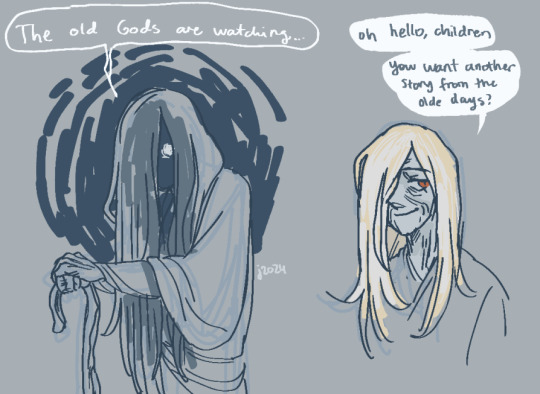
he could look a lot more like a corpse, but this is what I ended up with! he can be very threatening but mostly I'd think he pulls the "old gods" scare card to prank kids. mostly he's like an elder of the village, telling stories (telltales or true stories, no one really knows) and giving good, although cryptic advice. his hair is extraordinarily healthy and thick for his age.
#for personal reasons I didn't look up photos for reference but I guess this'll do for now#dunno how well “old gods” works with the greek theme but my nordic brain likes that a lot#what if in old days he turned more to nordic folklore/shinto-kind of “there's gods and holiness everywhere” type of thinking#own art#inazuma eleven
49 notes
·
View notes
Note
Can I please ask for a record of Ragnarok characters with sister Rosa
She's an OC of mine and you can find her info on my page here on Tumblr
RoR! Bishamonten with Sister Rosa! S/O
Type of Writing: Request Name: RoR! Bishamonten with Sister Rosa! S/O Characters: Bishamonten Requester: @nunezs-stuff
A/N: The Reader may not be fully accurate to your OC, but I do hope I did her some justice. She deserved better than how she was treated by her family in your story. By the way, I'm sorry it's only one character here, but I couldn't think of any ideas for another characters. And, the characters of yours and the stories are kinda twisted to fit this fandom's set-up.
✧⋆⋅⋆⋄✧⋄⋅⋆⋄✧⋄⋆⋅⋄✧⋄⋆⋅⋄✧⋄⋅⋆⋄✧⋄⋆⋆⋄✧⋄⋆⋆⋄✧⋄⋅⋆⋄✧⋆⋅⋆⋄✧⋄⋆⋆⋄✧⋄⋆⋆⋄✧⋄⋅⋆⋄✧⋆⋅⋆⋄✧⋆⋅⋆⋄✧⋄⋆⋅
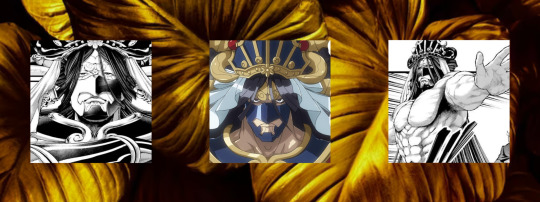
✧⋆⋅⋆⋄✧⋄⋅⋆⋄✧⋄⋆⋅⋄✧⋄⋆⋅⋄✧⋄⋅⋆⋄✧⋄⋆⋆⋄✧⋄⋆⋆⋄✧⋄⋅⋆⋄✧⋆⋅⋆⋄✧⋄⋆⋆⋄✧⋄⋆⋆⋄✧⋄⋅⋆⋄✧⋆⋅⋆⋄✧⋆⋅⋆⋄✧⋄⋆⋅
🍀 Okay, how the FUCK did you manage to get your father, Demaryius, to allow you to even come nearby one of the Gods, nonetheless one of the most angry-seeming ones?!
🍀 Bishamonten is hailed for being quite cold-appearing and very determined in what he believe in, much to Demaryius' annoyance. But, at least he was far from the level of arrogance that Zeus and Poseidon held in their thick-boned heads
🍀 But, when you had come home and passed over the other children of the God's, and began to request to speak about the Shinto God of Fortune in War and Battles, he had begun to catch up quickly
🍀 While it did hurt him inside, Demaryius knew that being held back and pushed into a mold without giving you a chance to breath and speak your mind was the reason you had ran off and gotten injured, sending you into his arms
🍀 So, after a few months of speaking to you about this, Demaryius had invited Bishamonten to his home and sat across a blue-glass table, his blank eye starring into his softer ones
" I am aware that you both seemingly care for one another, am I correct, Bishamonten? " " ... I suppose you are correct, Demaryius. "
🍀 Sitting and watching as your lover and your adoptive father spoke back and forth was something that you were beginning to regret letting happen, especially when your father managed a very minuscule lift in Bishamonten's usual frown and he immediately summoned a photo-book of your 'youngling' photos
🍀 Bishamonten was very off-put with how well his 'family' (the Seven Lucky Gods) and yours got along as well as they did, but, you were quite the unusual person yourself
#Record of Ragnarok#RoR#Shuumatsu no Valkyrie#SnV#RoR Shinto Pantheon#Record of Ragnarok Gods#RoR Gods#Record of Ragnarok x Reader#RoR x Reader#Shuumatsu no Valkyrie x Reader#SnV x Reader#RoR Shinto Pantheon x Reader#Record of Ragnarok Gods x Reader#RoR Gods x Reader#S/O! Reader#F! Reader#GN! Reader#God! Reader#RoR Bishamonten#RoR Bishamonten x Reader
56 notes
·
View notes
Text
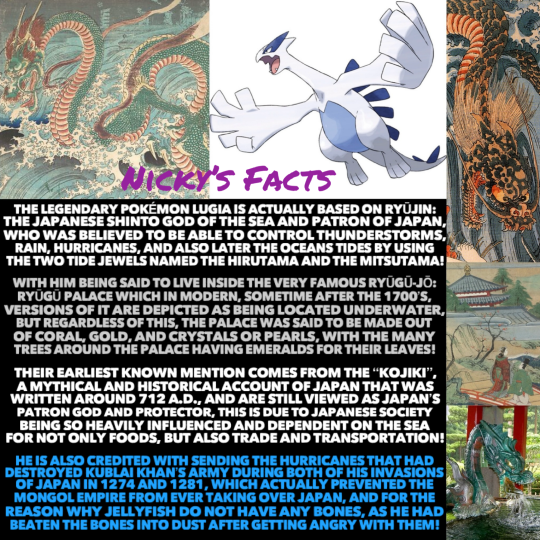
All hail the god of the Sea and protector of Japan!
🌊⛩⛈
#history#lugia#ryujin#pokemon#ryūgū-jō#japanese history#shinto#medieval#legendary pokemon#kojiki#shinto history#pokemon the movie 2000#gamer girl#god of the sea#thunderstorms#johto region#japan#mythology#medieval history#pokemon silver#pokemon soulsilver#game freak#nickys facts
16 notes
·
View notes
Photo

Legends and myths about trees
Utaki worship in Ryukyu Shinto - Forest where the gods descend in Ryukyu Shinto
Ryukyu Shinto is a polytheistic religion that has been practised mainly in ancient Ryukyu and the Ryukyu Kingdom (Ref). It lacks written scriptures, specific doctrines or founders, and is an animistic and ancestral religion of mythology and nature worship.
Utaki are places where the mythical deities of the Ryukyu Islands exist or visit, and where ancestral deities are worshipped. It is a central facility in local rituals and still attracts many worshippers as a sanctuary that protects the area.
In Ryukyu Shinto, it is women who serve the gods. Since ancient times, women were considered to have stronger spiritual powers than men in the Ryukyus, and the noro, who served the gods, and the yuta, who were shamans, were also women. So, it was completely off-limits to the public, especially men, during the Kingdom period, and even the king had to change into women's clothing to enter the sanctuary. Even today, most of them only allow men to enter up to a certain area.
Many Utaki are forest spaces, springs or rivers, and sometimes the island itself. Some Utaki have a stone monument called Ibe or Ibi stone in the centre of the space, but this is originally a sign to which the deity descends and is not a sacred body in the strict sense of the word (although in many places it is treated as a sacred body).
Among others, the Sefa Utaki, the highest sacred site, is believed to be a Utaki from the 15th-16th century, during the reign of King Shō Shin, the second Shō dynasty of the Ryukyu Kingdom. “Sefa” means "highest" and "Sefa Utaki" means "highest Utaki", which is a common name. The official name of the deity is "Kimigataki, Syugataki-no-Ibi (meaning sanctuary where the lord descends)".
Later, following the invasion of Satsuma (now Kyushu, Japan), the original beliefs and ancient colours of the theocracy were gradually weakened and dismantled by reforms that promoted modernisation.
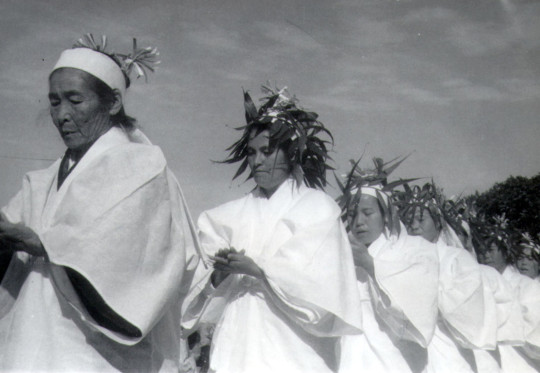
木にまつわる伝説・神話
御嶽(うたき) 〜 琉球神道における神が降臨する森
琉球神道は、古琉球および琉球王国(参照)を中心に信仰されてきた多神教宗教である。固有の教典や具体的教義、開祖を欠いており、神話、自然崇拝のアニミズム的かつ祖霊崇拝的な宗教である。
御嶽(うたき) は琉球神話の神が存在、あるいは来訪する場所であり、また祖先神を祀る場でもある。地域の祭祀においては中心となる施設であり、地域を守護する聖域として現在も多くの信仰を集めている。
古来、琉球では女性の方が男性よりも霊力が強いと考えられており、神に仕えるノロやシャーマンであるユタも女性であった。そのため、王国時代は完全に一般人、特に男性の立ち入りは厳禁とされ、王であっても女性の衣装に変えて入域しなければならないほどの聖域だったと云われている。現在でもその多くが一定区域までしか男性の進入を認めていない。
御嶽(うたき) の多くは森の空間や泉や川などで、島そのものであることもある。御嶽(うたき) によっては空間の中心にイベあるいはイビ石という石碑があるが、これは本来は神が降臨する標識であり、厳密な意味でのご神体ではない (ご神体として扱われているところも多い)。
中でも、最高の聖地である斎場御嶽 (せーふぁーうたき) は、15世紀-16世紀の琉球王国・尚真王時代の御嶽であるとされる。「せーふぁ」は「最高位」を意味し、「斎場御嶽」は「最高の御嶽」ほどの意味となり、これは通称である。正式な神名は「君ガ嶽、主ガ嶽ノイビ (最高の神が降臨する聖域の意)」という。
その後、薩摩 (現在の九州) の侵入を受けて以後、近代化を進める改革によって、神権政治の本来の信念と古来の色彩は、次第に弱まり、解体されていった。
#trees#tree legend#tree myth#utaki#sefa utaki#ryukyu shinto#mythology#legend#ryukyu kingdom#okinawa#gods descend forest#nature#tradition#art#sharmans#spiritual powers
156 notes
·
View notes
Text
The sun is gay
#greek mythology#apollo#shinto#shintoism#japanese mythology#amaterasu#greek gods#lgbtq#lesbian#gay#bisexual
27 notes
·
View notes
Text
Japanese Monkey God
User @red-lights-burning asked if there was a connection between Sun Wukong and the monkey gods of Japan. They provided lovely info, which was split between two asks, but I decided to put everything together into a single post.
@red-lights-burning asked: Japan has their own monkey protector named Masaru AKA Sannō Gongen, who was created back in the early 9th century by Tendai Buddhist sect founder Saichō shortly after he returned from China. So it makes me think if Monkey King was already a thing in the 800’s and if he was one of the inspirations for Masaru. A description from onmarkproductions (a really great site for anyone curious about Japanese Buddhism and Shintō) MASARU 神猿 Literally “Kami Monkey.” Masaru is the sacred monkey and protector of the Hie Shrine (aka Hie Jinja 日吉神社, Hiyoshi Taisha 日吉大社). The term “Masura” is often translated as “excel,” reflecting the belief that this sacred monkey can overcome all obstacles and prevail against all evil. Masaru is thus considered a demon queller par excellence (魔が去る・何よりも勝る). In the Heian era, Masaru (also translated “Great Monkey”) was invoked in Kōshin rituals to stop the three worms from escaping the body. Masaru also appears in Japanese scrolls used in Koushin rites. Here’s a couple other descriptions SANNŌ GONGEN 山王 権現 SARUGAMI 猿神 Fertility, Childbirth & Marriage Monkeys are patrons of harmonious marriage and safe childbirth at some of the 3,800 Hie Jinja shrines in Japan. These shrines are often dedicated to Sannō Gongen 山王権現 (lit. = mountain king avatar), who is a monkey. Sannō is the central deity of Japan’s Tendai Shinto-Buddhist multiplex on Mt. Hiei (Shiga Prefecture, near Kyoto). The monkey is Sannou’s Shinto messenger (tsukai 使い) and Buddhist avatar (gongen 権現). The monkey messenger is also known as Sarugami (猿神; literally “monkey kami”). Sarugami is the Shinto deity to whom the three monkeys (hear, speak, see no evil) are reportedly faithful. The monkey shrine at Nakayama Shrine 中山神社 in Tsuyama City, Okayama Prefecture, is dedicated to a red monkey named Sarugami, who blesses couples with children. According to shrine legends, the local people at one time offered human sacrifices (using females) to this deity. The shrine is mentioned in the Konjaku Monogatari-shu (今昔物語集), a collection of over 1000 tales from India, China, and Japan written during the late Heian Period (794-1192 AD). Sarugami, like Sannou Gongen, is also worshipped as the deity of easy delivery and child rearing. At such shrines, statues of the monkey deity are often decked in red bibs -- a color closely associated with fertility, children, and protection against evil forces and diseases like smallpox.
My answer:
I've read only a little bit about Japanese monkey gods. I previously referenced Sarugami in my article about the possible shamanic origins of primate-based boxing in China. Part of footnote #14 reads:
In Japan, monkeys were also associated with horses and healing via the warding of evil. Apart from monkeys being kept in stables like their Chinese counterparts, their fur was applied to the harnesses and quivers of Samurai because the warriors believed it gave them more control over their mounts. Furthermore, monkey body parts have been consumed for centuries as curative medicines, and their hides have even been stuffed to make protective amulets (kukurizaru) to ward off illness. Likewise, a genre of painting depicts divine monkeys (saru gami), messengers of the mountain deity, performing Da Nuo-like dances to ensure a good rice harvest (Ohnuki-Tierney, 1987, pp. 43-50)
The aforementioned article suggests a connection between monkeys and the Shang-Zhou Da Nuo (大儺 / 難; Jp: Tsuina, 追儺) ritual, an ancient, war-like, shamanic animal dance designed to drive away demonic illness and influences. The pertinent section reads:
It’s possible that the “twelve animals” of the Da Nuo exorcism refer to some precursor of the Chinese zodiacal animals (rat, ox, tiger, rabbit, dragon, snake, horse, goat, monkey, rooster, dog, and pig). If true, monkey fur could have been among the animal products worn by the ritual army. After all, monkeys have long been associated with curing illness and expelling evil in East Asia. [14] A modern example of exorcists who don monkey fur are the shamans of the Qiang ethnic group of Sichuan. The Qiang worship monkeys as the source and savior of their sacred knowledge, as well as the progenitor of their people, the latter being a myth cycle common among ethnic groups of Tibet and southwestern China.
This is the only relevant info that comes to mind. But based on what I know, I would guess that Sun Wukong and the monkey gods of Japan draw upon the same cultural sources. I hope this helps.
Source:
Ohnuki-Tierney, E. (1987). The Monkey as Mirror: Symbolic Transformations in Japanese History and Ritual. Princeton: Princeton University Press.
#asks#Sun Wukong#Monkey King#Journey to the West#JTTW#Japanese Buddhism#Shinto#Buddhism#monkey god#shamanism#Lego Monkie Kid#LMK
78 notes
·
View notes
Text
ok omg loads of people talking about shinto in the notes. shinto doesn’t really operate in the same way as christianity or most other religions so there isn’t actually a 1:1 here re: the christian morality people tend to project onto him and anything connected to shinto. i don’t think light’s moral stance has anything to do with religion at all. (& in fact shinto doesn’t really have a moral imperative so it can’t come from that.)
#sorry someone was asking about purity & shinto and this is hard to explain but its kind of basically a fully different thing#bc christian purity is moralistic and shinto purity is not#its more like. being ready for the gods but also you can easily practise shinto and be an athiest at the same time#its kind of comparing apples to oranges imo#sorry this probably isnt the answer you want#but i genuinely think any actual attempt to compare the two is just going to be forcing shinto into a box where it doesn’t fit#its like trying to compare how opening a book and opening a window affect temperature#maybe someone else disagrees though like. i do practice shinto insomuch as thats an appropriate word but obv im not an expert#i feel like people often really want shinto to add an extra element to dn but truly i dont think it does
13 notes
·
View notes
Text

Kagutsuchi, the Shinto Kami of fire and the forge. Born from the couple Izanami and Izanagi, Kagutsuchi was the younger brother to Amaterasu, Tsukuyomi and Susanoo. Kagutsuchi’s fire was so immense and powerful it could blind all who gazed at him. Because of this, when he was born he accidentally killed his mother Izanami. Furious, Izanagi beheaded his newborn son and split his body eight ways and threw the pieces across the earth, creating eight volcanoes, the blood of Kagutsuchi that dripped from Izanagi’s blade gave birth to a multitude of of gods, such as Watatsumi and Takemikazuchi. Kagutsuchi’s essence was believed to reside in calamitous fires. Kagutsuchi was worshipped by smiths, who prayed to the god for help with their metal work.
Unlike most of the other important Shinto Kami, Kagutsuchi doesn’t seem to have developed from a respective Ainu Kamuy. Kagutsuchi goes by the titles of Hi-no-Kagutsuchi and Homusubi. The name Kagutsuchi comes from the old Japanese words “Kagu” meaning shining, and “chi” meaning force. Kagatsuchi was considered cognate with the Japanese Buddhist deity Atago Gongen who was the Japanese form of the mainland Buddhist bodhisattva Kṣitigarbha, who in Japan was called Jizo.
#art#character design#mythology#deity#shinto#shintoism#japanese#japanese mythology#kami#fire god#destruction god#volcano god#amatsukami#forge god
9 notes
·
View notes
Text
I'm reading the original Planescape Campaign Guide and I'm surprised with just how fully committed it is to the whole "there are gods based on real world mythology/religion and these are literally the same guys as those worshipped on Earth, because Earth is a Prime Material Plane" bit it is. A lot of the features on various planes are the realms of real world gods or pantheons. Ignoring if such a thing is respectful, the funny part is that they've inadvertently implied that all religions are real, except for the Abrahamic faiths (all of them, not just the big three) and Buddhism. Devils are real though, their name has just been censored.
#dnd#adnd#dnd history#planescape#on the respectful thing it just strikes me as igornance with no malice#although the inclusion of hindu and shinto gods is a bigger fuck up then 'heres zeus and heres the jade empror'
11 notes
·
View notes